2024—A Year forTool Deployment
This is the time of the year to reconfigure and figure out what is on the front burner for 2024! Finals are (finally) finished, projects…
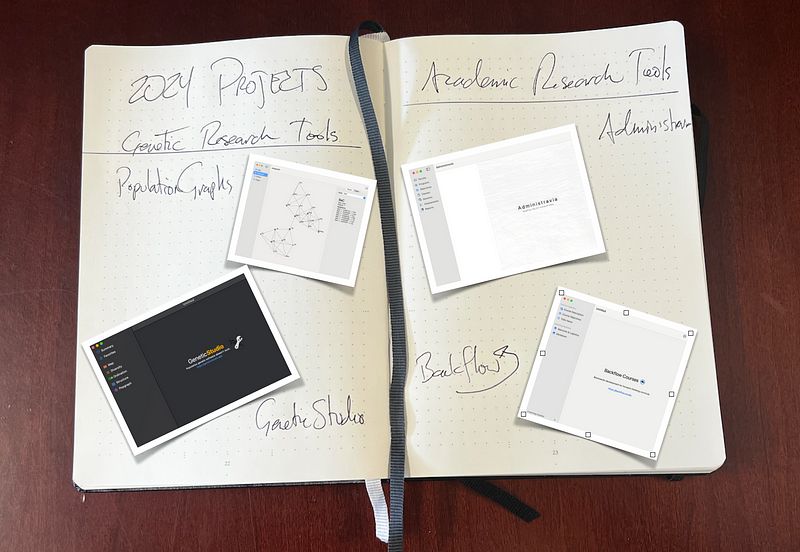
This is the time of the year to reconfigure and figure out what is on the front burner for 2024! Finals are (finally) finished, projects are wrapping up for the year, and the university is going into the short torpor that allows the passing of the calendar year before rushing into the spring semester.
There will likely be a significant disruption in the configuration of my academic unit in the near future, so it is even more critical to develop a roadmap of intentions that can help me keep an even keel during this next year.
Research Activities
My academic research is primarily focused on population genetic analysis. I’m a botanist but have strayed into the “less interesting taxa” lately, and there are a lot of loose ends and low-hanging fruit that need to be tended to. Most of this concerns tools I’ve developed to help analyze population genetic structure and overall genetic connectivity.
Population Graph Extensions
My research program's most widely accepted toolsets focus on how we interpret genetic connectivity among populations (or sampling locales) using graph-theoretic mathematical models. This stems from an approach I first published while at Iowa State University.

PopulationGraphs uses conditional genetic independence (e.g., marginal probability density functions) to more accurately quantify the features and forces that have shaped the spatial distribution of multilocus genetic structure.
There are some tools that I’ve been working on to help apply this approach beyond the popgraph R package that I make publicly available. The key is the visualization and quantification of the overall shape of the resulting population graph network—not the magnitude of a fixation index with questionable provenance (see post here about irreversibility of structure and diversity statistics).
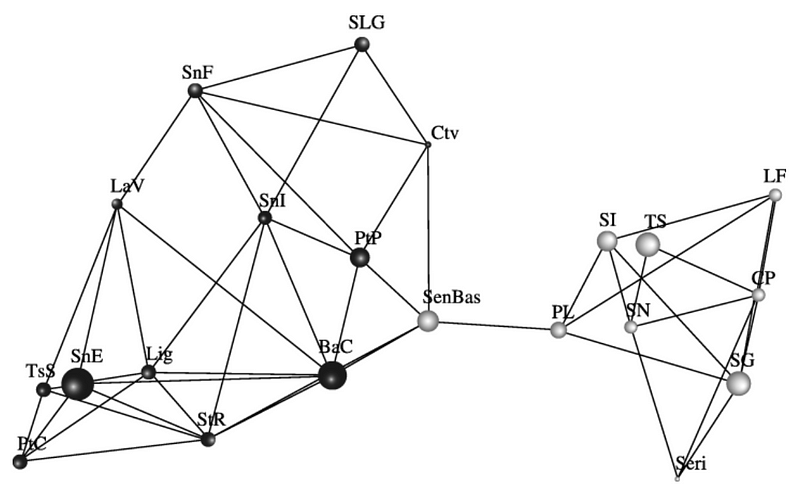
So, in 2024, I’ll make a couple of extensions to this model, the tools used to create these network structures and their subsequent analysis.
- A desktop/tablet version of the software that can take advantage of the hardware acceleration in the latest Apple Silicone chips (particularly those for ML; prototype below).
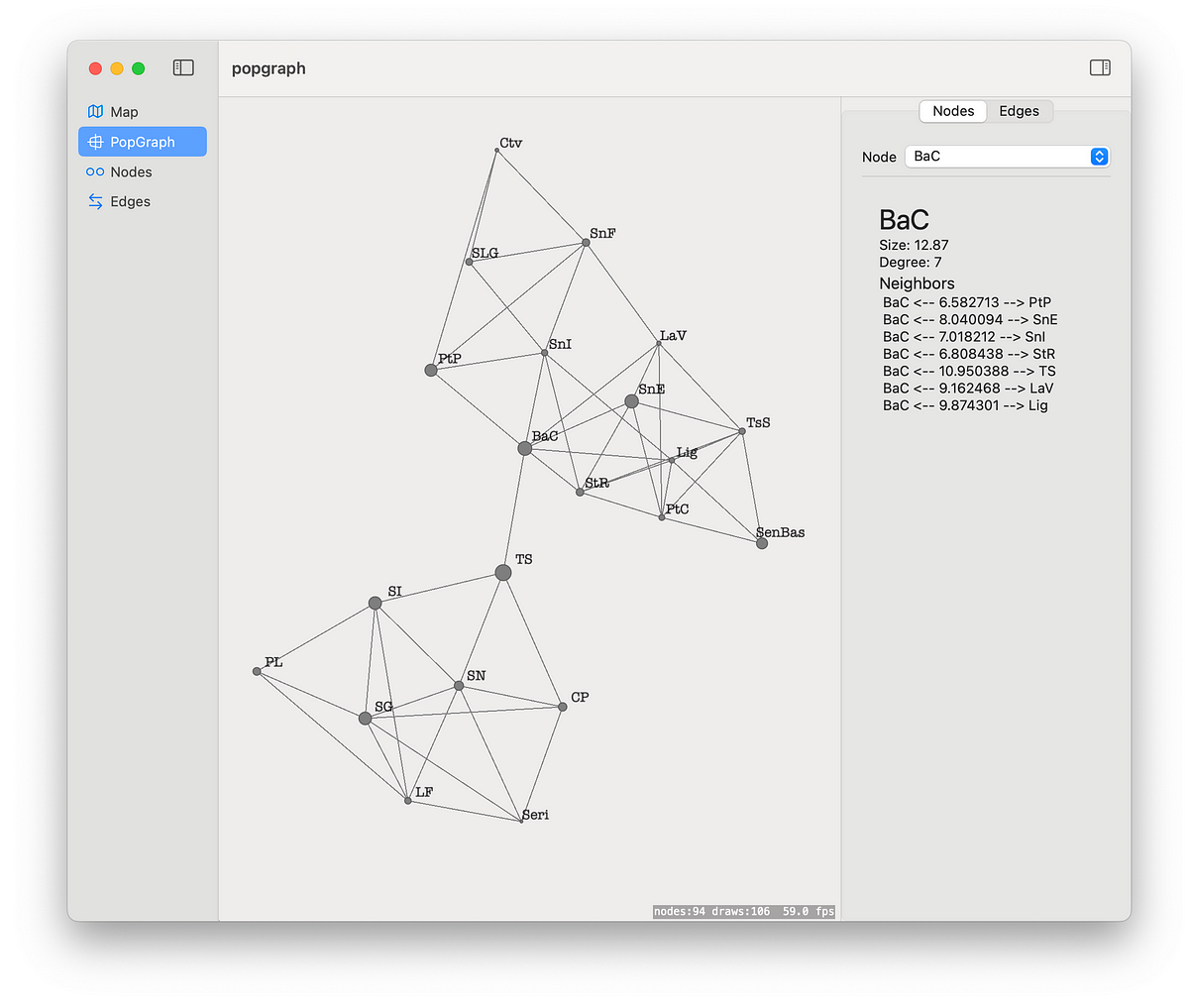
- Increased integration with spatial raster maps to extract raster conditions along covariance connectivity lines. This builds upon the methods used in the Gravity of Pollination and Urban Hubs of Connectivity manuscripts.
- A complete benchmark of compressed and extended edges—a technique demonstrated before and implemented in the pop graph R package but yet to be properly introduced to its utility.
- Preparation for Apple Vision Pro, which will accelerate the use of this approach, mainly as we reveal how it can be used within the genome… You know what I'm getting at if you’ve seen my talk on Chromosome Walking.
GeneticStudio
Similarly, the more general analysis platform for population genetic analyses has been GeneticStudio. There have been various versions of this my entire career (even a MacOS7/Win95 GUI from the turn of the century). I gave up on making GUIs because keeping up with Windows took too much of my time (and I’m not a Windows programmer because of this basic philosophy).
It is also reasonable to combine a general data analytics interface with the Applied Population Genetics textbook I wrote. My idea here is to incorporate both into a single interface, linking the background philosophy and theory behind individual analyses with the ability to directly apply them to your data.
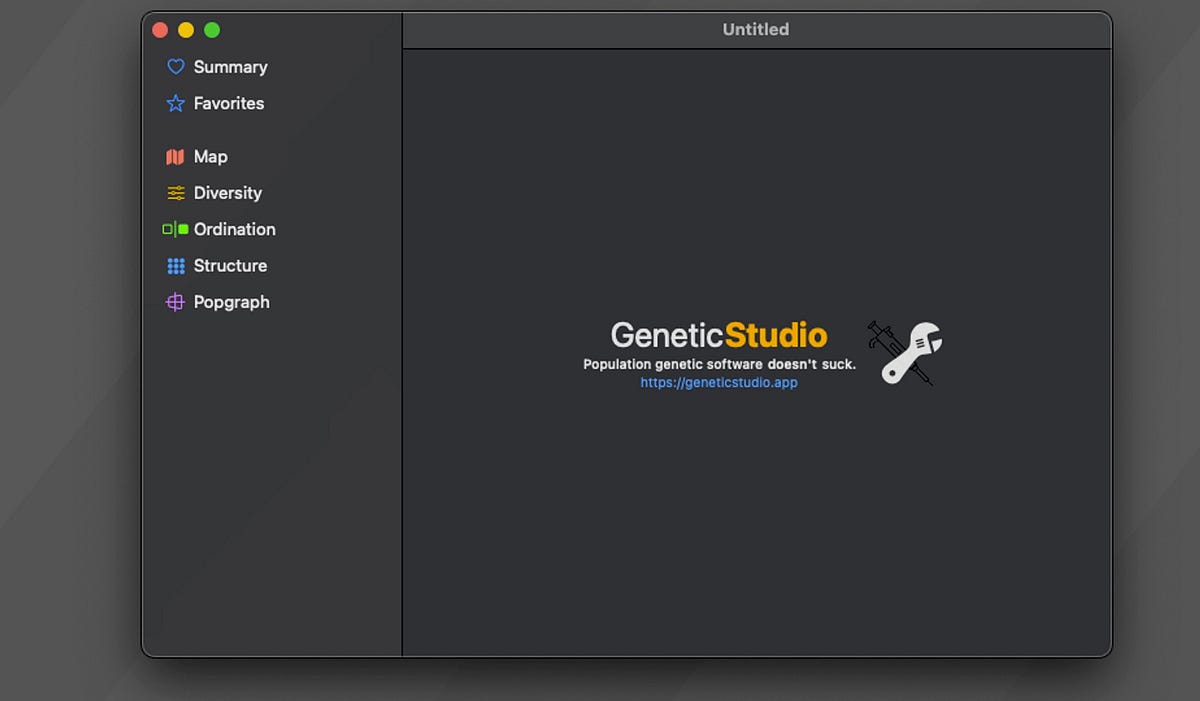
The goal here is to try to cover 80% of the things that we do on a routine basis but then provide a direct export to R and my gstudio package so that one could easily do more specific and specialized sets of analyses.
Curriculum/Administrative Projects
Since 2017, I’ve had the privilege of serving as the Director of the Center for Environmental Studies at Virginia Commonwealth University. During this time, the faculty and I have entirely reconfigured the curricula for our undergraduate and graduate programs.
We are almost finished with the complete revision but in hindsight, the data we’ve collected on this process, the metrics that I’ve been collecting, and the tools that I’ve been making to help in the process are potentially “artifacts of scholarly output” in their own right.
Quantitative Analysis of Curricula—Administravia
Managing academic programs doesn’t have to feel like death by a thousand mosquito bites…
As it turns out, the university could do a better job of making the data we collect on our academic program and faculty progress readily available or amenable to those of us who do the actual program development and deployment.
So I designed my own, called Administravia. It is currently on TestFlight (email me if you’d like to give it a whirl).
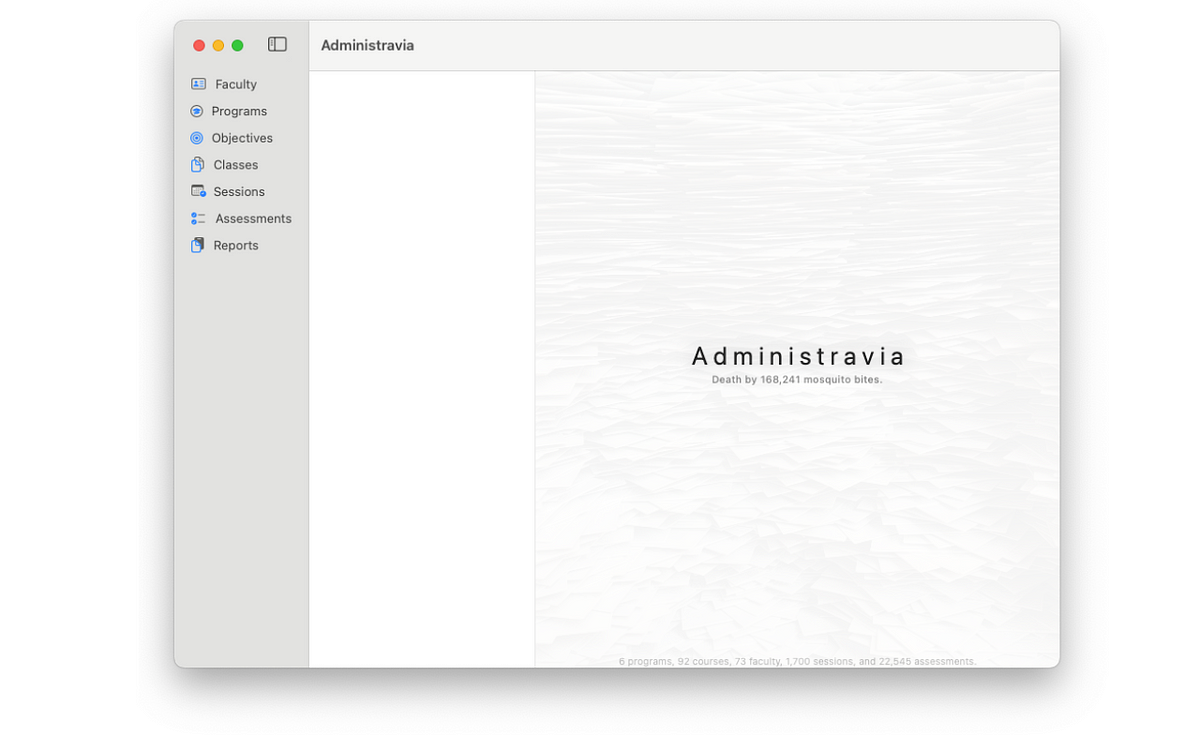
This is more of an analytical platform for academic departments, colleges, and schools. It currently serves to analyze:
- Faculty performance (quality and quantity of teaching)
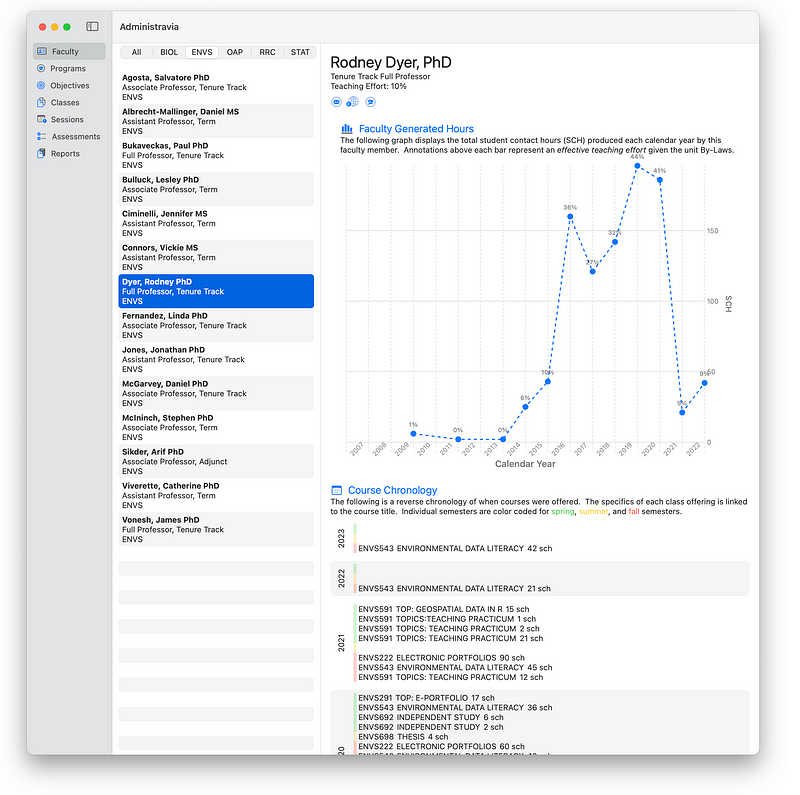
- Core course performance and the throughput of students in the program
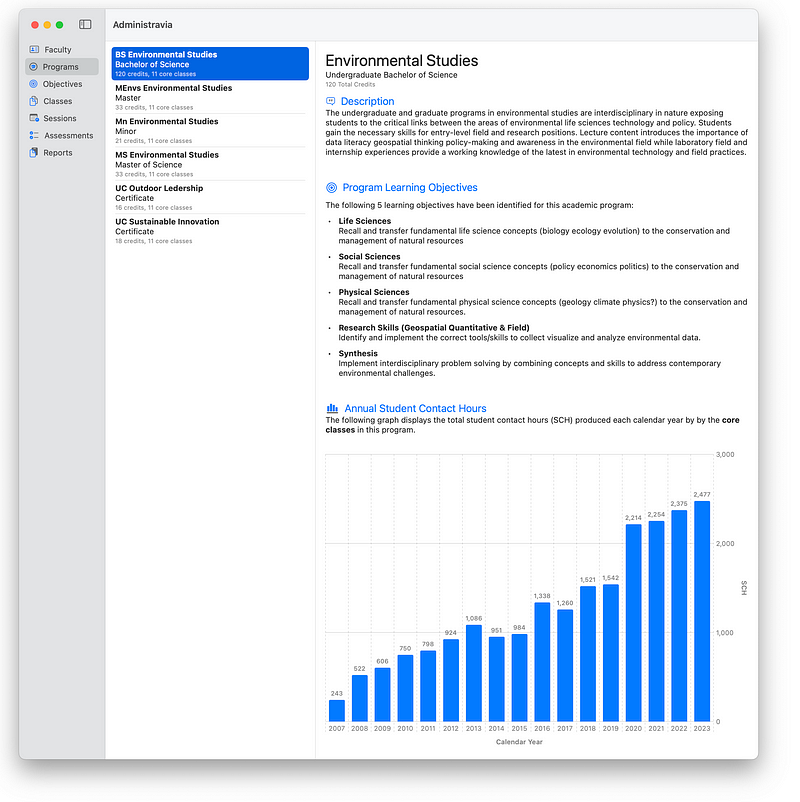
- Historical progress of courses as they contribute to individual program-level Learning Outcomes
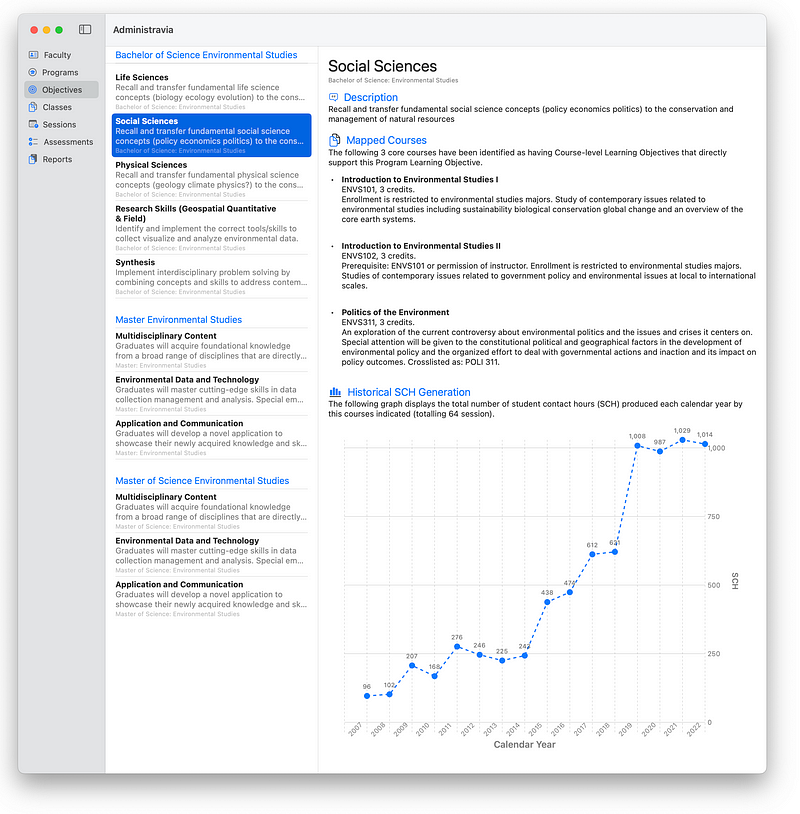
- Temporal tracking of individual classes to include seats, DWF rates, average grades, and scheduling of whose taught it through time.
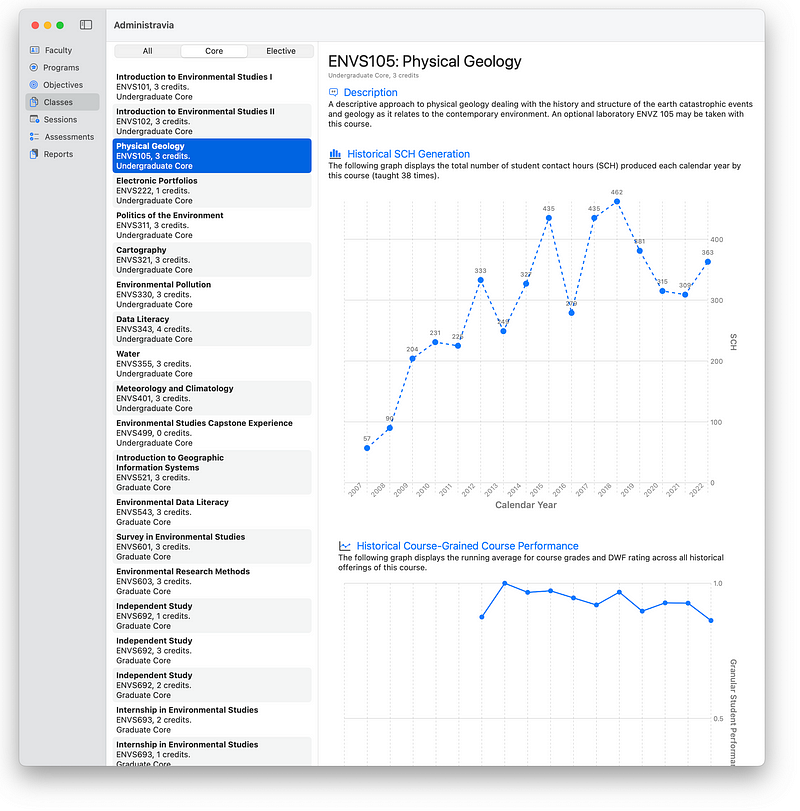
- Analysis of student feedback (qualitative and quantitative) for each course each semester for a broad range of student feedback.
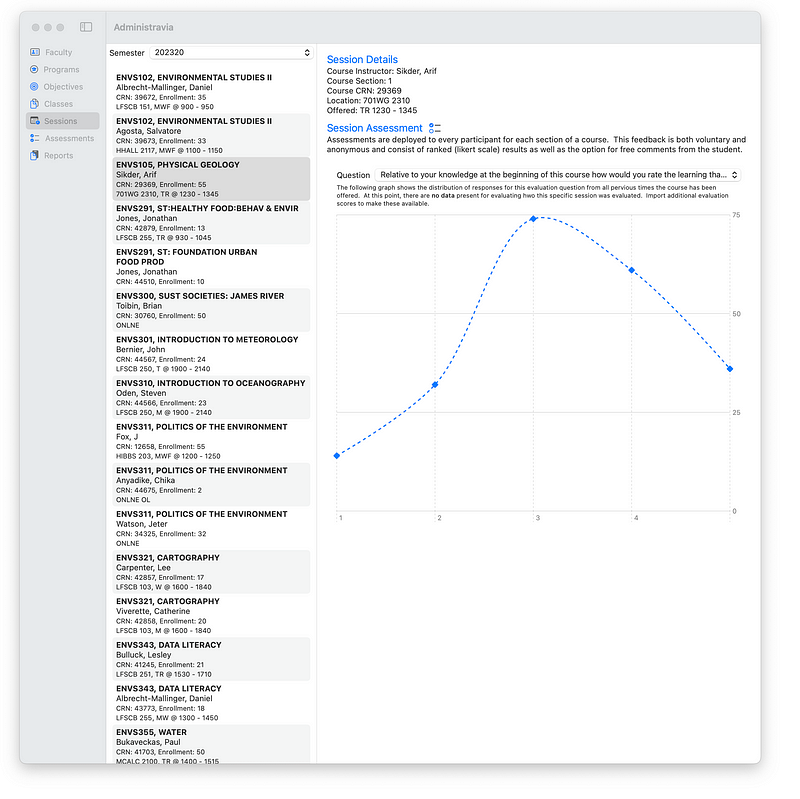
- Temporal analysis of course assessments is based upon both quantitative feedback from students but also from linguistic sentiment analysis of written responses and student feedback.
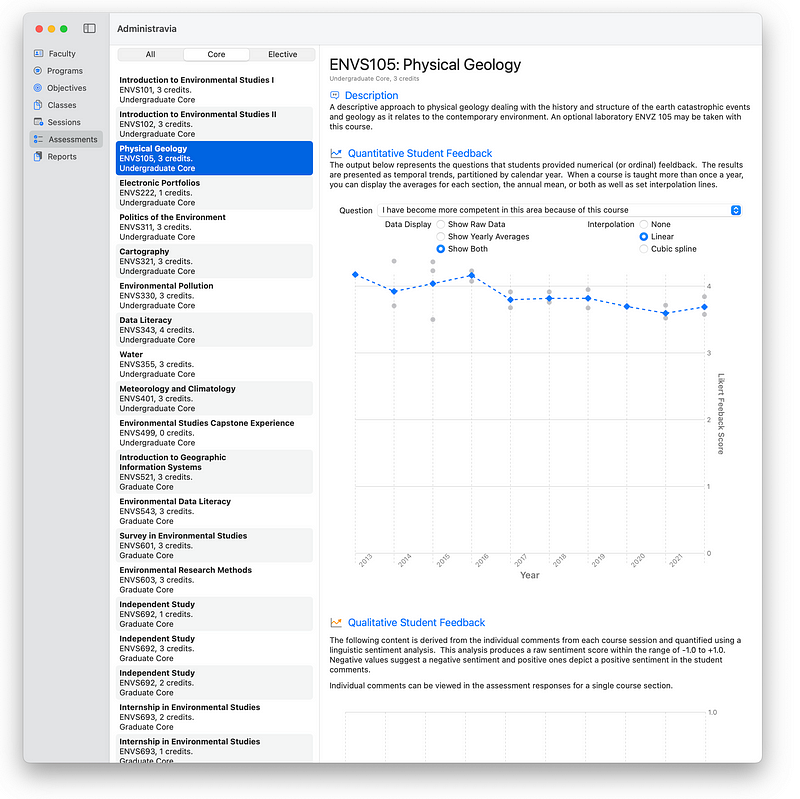
- Report Generation for programs, faculty, and individual courses. This part helps save a tremendous amount of time for chairs and directors since the history of teaching output (quantity and several measures of quality) can be quickly exported as part of the annual review process.
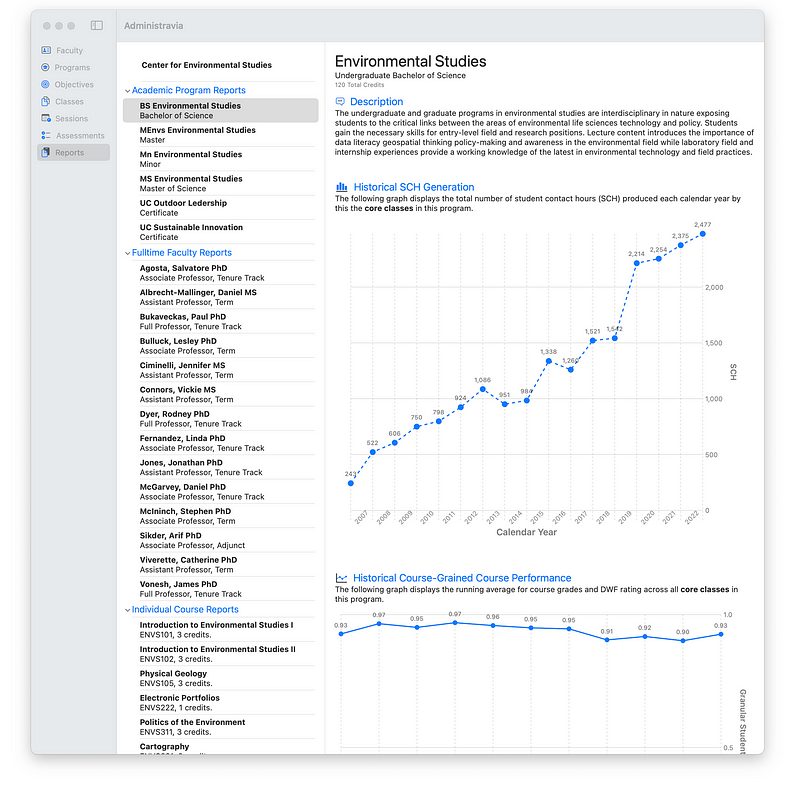
My goal for this next year is to be able to put in some additional components such as:
- Annual report templates for programs, faculty, and courses so that reports can be tailored to individual academic institutions.
- Integration of assessment tools that can then be mapped, unambiguously, to Course Learning Objectives and then onto Program Learning Outcomes. This helps us track, through time, not only how effective our assessment tools are but perhaps more importantly how well we are doing at developing, reinforcing, and assessing for mastery the fundamental components of our units academic output.
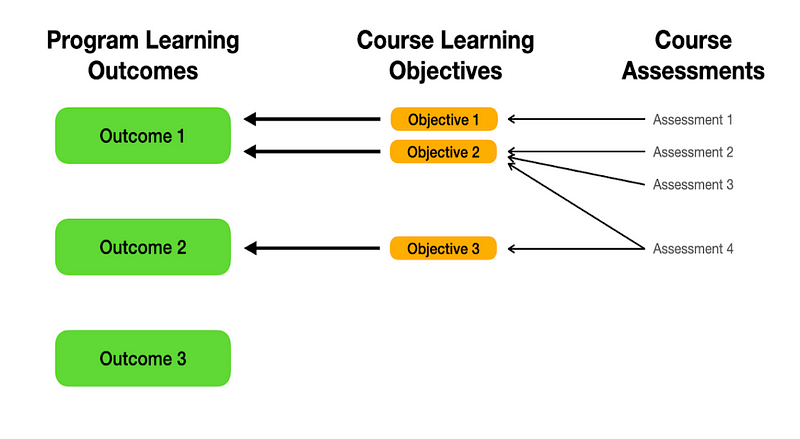
It is currently in Apple TestFlight, send an email to administravia@dyerlab.org if you are interested in giving it a spin.
Backwards Design
Finally, here is a small project that I spun off of Administravia. While initially integrated into it, I found it more effective if it stood alone as a single desktop/tablet application. I’m a big fan of backwards design as it allows the development of more effective curricula and learning environments.
This application helps in that regard to walk someone though the process of applying a backwards design approach to the creation of a new class.
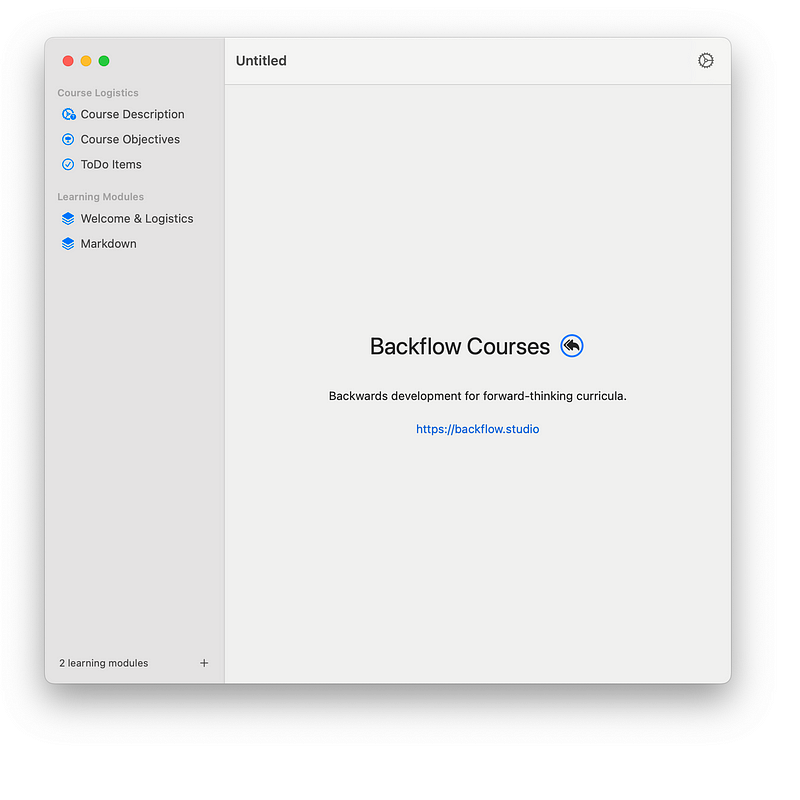
The Administravia application also imports the files from this one so that it can hook up the mappings that we show in the section above from Assessment Tool → Course Learning Objective → Program Learning Outcome.
By summer 2024, I’d like this to be in the App Store. If you are interested in playing around in the beta program, drop me an email at backflow@dyerlab.org.
The Wrap Up
I’ve been putting a lot on the back burner this past year or two and slowly developing the next generation of tools for my craft. This has been mainly due to work-related “unexpected” things that come up (hurry, do a complete Academic Program Review, etc.) that have hit me hard in scholarly output. Before taking over an administrative approach, my annual citation index was “going up and to the right.”
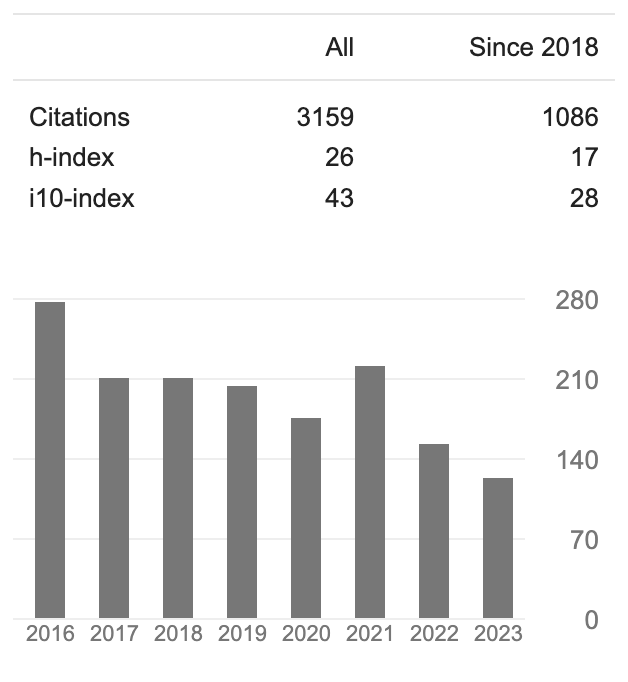
You can have a significant impact in your academic field or at your institution—but not both.
Overall, the demands of my administrative duties have pushed aside my scholarly activities, and as a result, I’m diminishing in my field. Nights and weekends have been spent trying to make this next revolutionary push in the tools we use for population genetic analyses, and this upcoming year will be when they are released into the wild. Maybe 2025 or 2026 will find me on a sabbatical or other intellectually re-invigorating activity.
A very exciting (or at least hopeful) time indeed…
I hope you have a wonderful winter (in the Northern Hemisphere) break and can spend it with those most important to you.
- RJD